How to replace the crankshaft position sensor (a.k.a. Rotation Sensor) on a motorcycle
A week ago, my new-to-me 1998 Ducati 900SS Supersport stopped firing up. Just after I listed it for sale, as I realised I was always riding the 1098S. Classic!
In the process I learned a lot about an important part of electronic ignition called the “crankshaft position sensor”. These are part of not just every motorcycle with electronic ignition, but ever car, too. I mostly deal with motorcycles though, so that’s my perspective here.
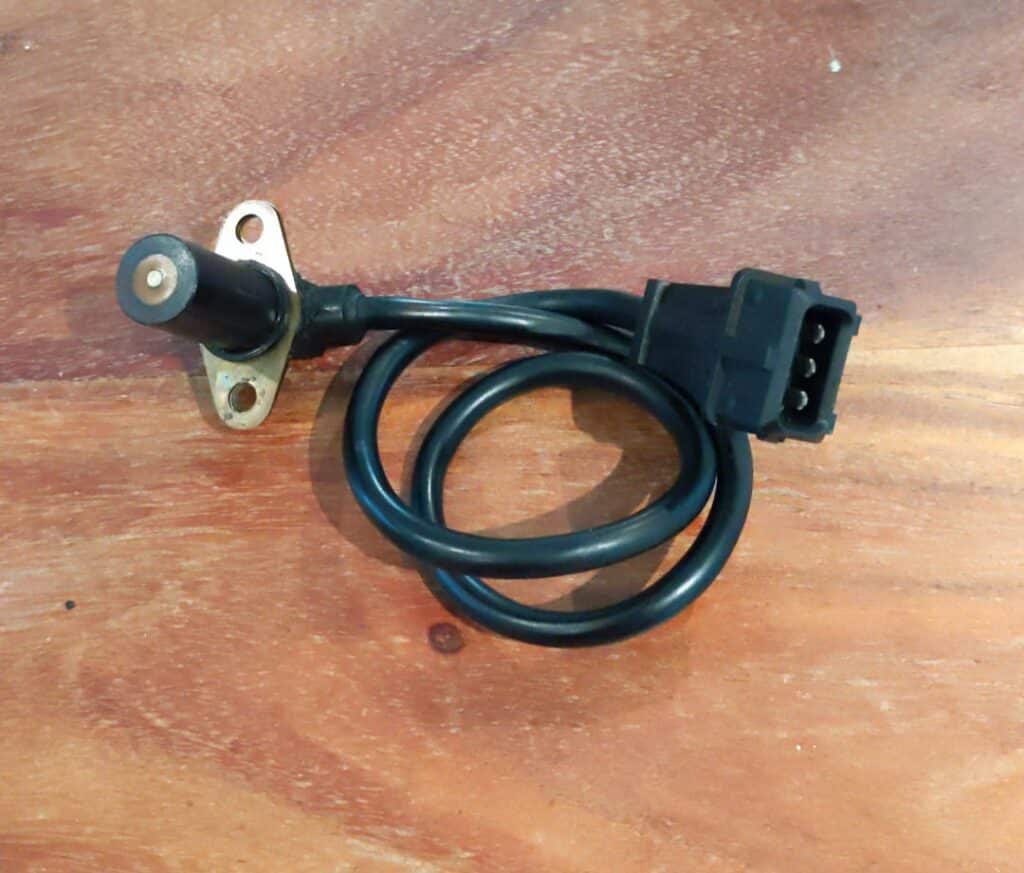
There are lots of reason an old motorcycle might not start. Generally these are
- Loose wire (they vibrate a lot… especially my old Ducati motorcycles)
- Blown fuse — sometimes indicative of something worse, but sometimes just a bad fuse
- Bad fuel pump
- Loose wire on the ECU
- Blown relay or starter solenoid
- Broken starter, or starter sprag/clutch
- Non-functioning charging system (bad battery, alternator/stator coil, or regulator/rectifier unit)
- Bad wire that got squished somewhere
- Compressed fuel line (the bloody things always get crimped as you move the tank up and down)
A number of other problems, like a bad coil, a bad injector or wire, or dodgy oxygen sensors, would cause running problems. But they wouldn’t (or would rarely) cause a failure to start.
So, I became familiar with where all these parts were on the 900 Supersport. The whole thing is better laid out than my old Monster M900, thank goodness.
I’ve gone through the same motions on other motorcycles — Ducati ones, an old Honda (my original CB900F), a few others here and there. The starting systems are generally the same, just laid out differently.
The problems was — after checking all those potential causes for a non-starting motorcycle, I hadn’t found a fault, and it still wouldn’t start.
Are you obsessed with motorcycles?
Well, I am. That’s why I created this site — as an outlet. I love learning and sharing what others might find useful. If you like what you read here, and you’re a fraction as obsessed as I am, you might like to know when I’ve published more. (Check the latest for an idea of what you’ll see.)
The “my motorcycle won’t start” problem in more detail
Saying a motorcycle “won’t start” is really just a description of the final conclusion, not of the symptoms.
To be able to better diagnose, you have to be able to describe in detail what’s happening.
There are usually all kinds of things that are informative, like
- Does anything come on?
- Does the fuel pump prime?
- Does anything move when you hit the starter?
And so on. I should do a fuller post on how to fix a non-starting motorcycle later!
In this case:
- Turning they key on caused the dash to light up and the fuel pump to prime the injector rail (whirrrrr… click). This meant, at least, that it wasn’t a fundamental fuse that had failed, nor the fuse for the fuel pump. (Also, the ignition barrel works!)
- Hitting the starter button caused the engine to turn over. So the starter works, as does the sprag. Also, I had worried that maybe the kill switch was broken —I took that apart and it was fine.
- However, the engine did not fire.
This meant that there was a lack of either spark or fuel to the cylinders — or perhaps both!
What else could cause the bike to not start at all?
The easy way to check that it wasn’t a fuel issue was to spray some “Start ya bastard!” starter spray behind the air filter. This did nothing. So even with fuel, there’s no spark. Something’s inhibiting spark.
Secondly, the easy way to check it’s not a spark issue is to smell for gas in the exhaust. There wasn’t any. There’s no unburnt fuel being sent out.
So my conclusion was: something was telling the computer not to send any fuel or spark to the cylinders.
This is when I found out about the “Crank Position Sensor”.
A quick intro to the Crank Position Sensor
The crankshaft position sensor tells the ECU that the engine is rotating, and its position, so it can say “yo, have some fuel and/or spark [at the right times]”
If the position sensor doesn’t send a signal, or if the signal is intermittent, then the ECU stops sending spark and fuel to the pistons. There’s no trigger for the ECU to know when to send fuel or spark.
Those of you old enough to remember engines from the seventies will know what “points” (or “timing points”) are. That was the old way in which ignition timing was set. You could also advance or retard the timing by modifying the points. These days, you do that via modifying the map in the ECU.
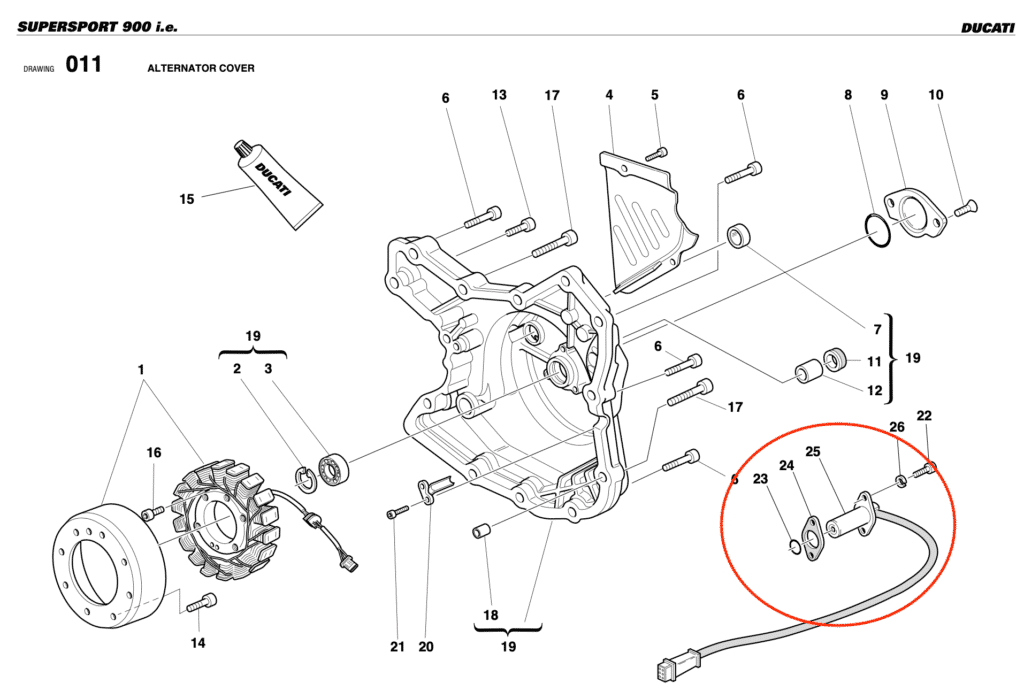
In the parts manual (from Carl Salter’s website) it’s just referred to as a “sensor”, part number 552.4.009.1A (on my 900SS).
The location of the crank position sensor on my Ducati motorcycle is on the left hand side of the engine, right near the alternator.
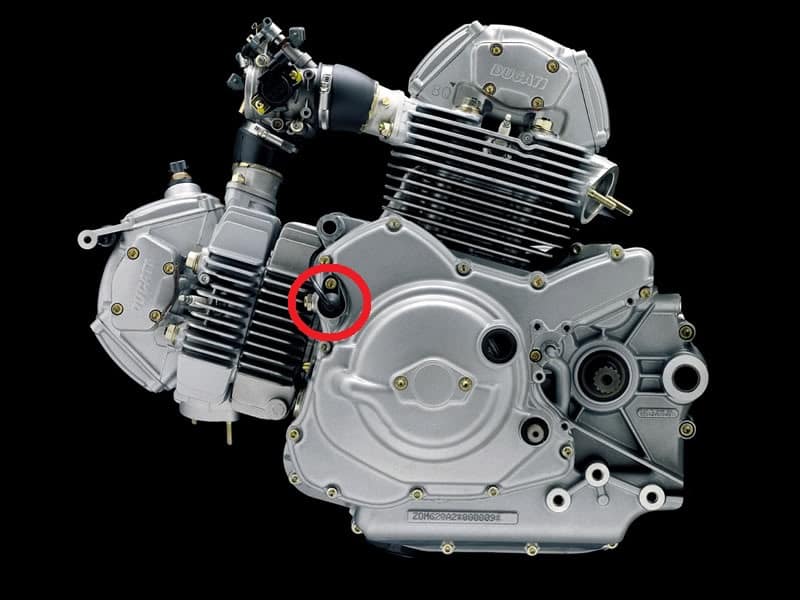
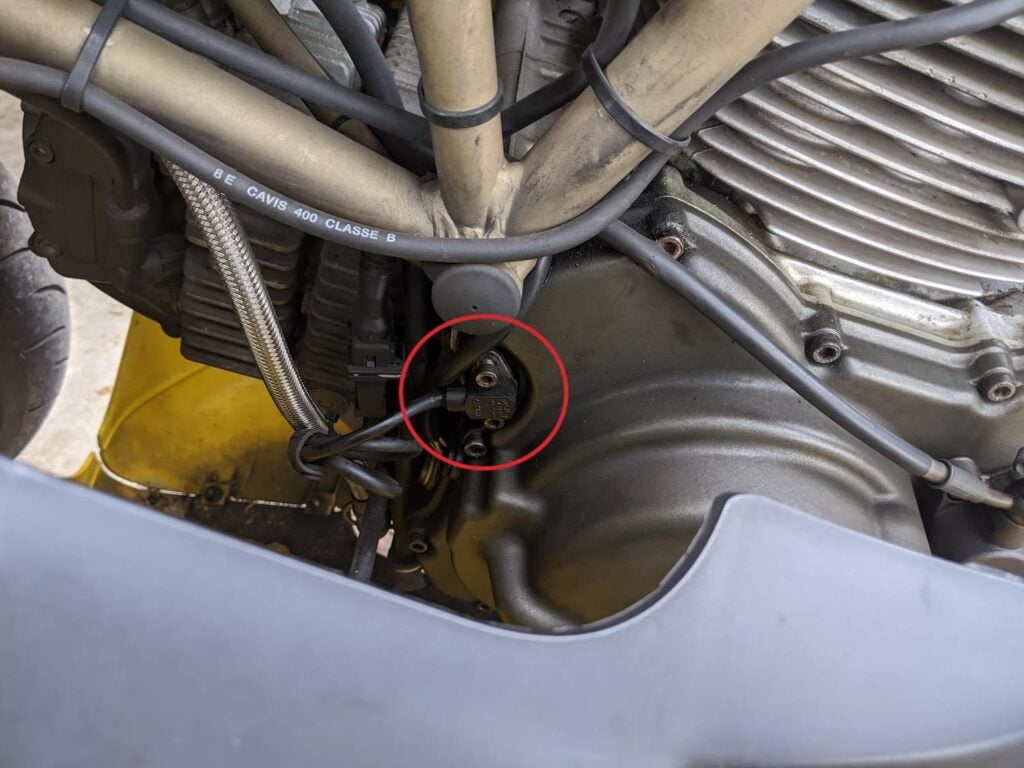
The crankshaft position sensor is referred to as a
- Rotation sensor
- Crankshaft position sensor or Crank position sensor
- Timing sensor (indicating what it helps do)
- Speed sensor (misleading, tbh)
The general principle of the crankshaft position sensor is the same as timing points. The sensor either changes in voltage signal or opens and closes a circuit (depending on the type of sensor used), depending on a metal object moving near it — usually, a timing wheel attached to the crankshaft.
How does the crankshaft position sensor work?
The crank position sensor is a “Hall effect” sensor (with a capital H, because it’s named after someone.)
The Hall effect was named for Edwin Hall who discovered it in the late 1800s. In simple terms, it’s an electromagnetic phenomenon whereby a voltage is induced in an electrical conductor in the presence of a nearby magnetic field.
There are different kinds of Hall effect sensors. They’re not all strictly “Hall effect” in the original form (which is just about metal and magnets), because some of them use semiconductors, which were invented nearly a century later. The type of sensor that’s most common in motorcycle (and car) engines, including Ducati motorcycles, uses a stationary permanent magnet and semiconductor, separated by an air gap.
These sensors work by applying a current through a semiconductor that reacts to a changing magnetic field. The sensor is placed inside the engine. There’s a piece of metal that rotates inside the engine that sends timing signals to the sensor. Every time that piece of metal passes, the semiconductor switches to or from a conducting state.
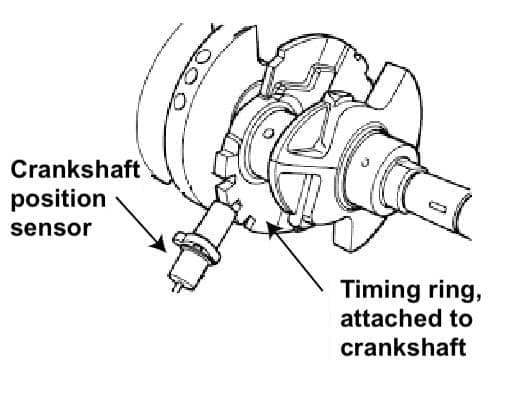
So to summarise very glibly… the hall effect sensor in a motorcycle is like a relay that goes from “off” to “on” each time the timing wheel’s metal goes past.
These off/on signals are sent to the ECU, which then uses them as an input into deciding whether or not to send spark to the plugs or fuel to the injectors.
Symptoms of a bad crankshaft position sensor
There are three ways in which a bad rotation sensor can stop a motorcycle from working.
Firstly, a bad rotation sensor can stop a motorcycle from firing at all.
Some motorcycles will hear the fuel pump prime and all the lights come on… but no fuel or spark will be delivered to the chambers.
If you’re riding while it fails, this can cause you to just stop. If you’re parked, it can cause you to not be able to start.
Secondly, a bad rotation sensor can cause stumbling. This can be at a variety of speeds. Usually, this is associated with a sudden RPM drop. I had this happen around 4,000-4,200 rpm consistently. I’ve read of people having it at different random RPM ranges. Some say 5,000, or even 8,000, with different conditions like “at any throttle opening” or “only under wide-open throttle”.
Thirdly, another symptom of a bad position sensor is the motorcycle starts and runs for a while… and then stalls. This can be anything from a “hard start”, to a few revolutions, to maybe even 10-20 minutes of running.
I’ve read of the whole range, and experienced a couple. In this case, my Ducati Supersport 900 ran for about 20 seconds before stumbling and failing.
Crankshaft position sensors do fail over time. Even though they’re a static component with no moving parts, after thousands of hours of use (assuming 20,000 kms is about the equivalent of 2-4,000 hours), the hot oil washing over them from inside the crank case can take its toll.
A “bad crankshaft position sensor” may not actually be a fully bad sensor. The effect of all that heat may have made the sensor weaker, in which case placing it closer to the timing wheel might have an effect. This is a dangerous game though… you might end up shearing bits off the sensor, sending them into your engine via the oil! Very bad!
It might also be a weak/loose/corroded connector. On older motorbikes, particularly those that have seen unseasonable weather, the crank position sensor’s connector may just have seen a little bit too much dust, oil, heat, or moisture. Check the plug.
And let’s not forget that the rest of the engine is a dynamic machine, constantly moving and heating/cooling. Tolerances change. The timing wheel might have moved slightly, or changed in shape (expanded), or whatever.
How to check faults on a crankshaft position sensor
Every position sensor is a bit different.
Firstly, broadly speaking, there are two-prong kinds, and three-prong kinds.
The two-prong kind of crankshaft position sensor sends a small induced voltage.
The three-prong kind of crankshaft position sensor has a voltage and a ground attached to two lines, and a signal comes out the other.
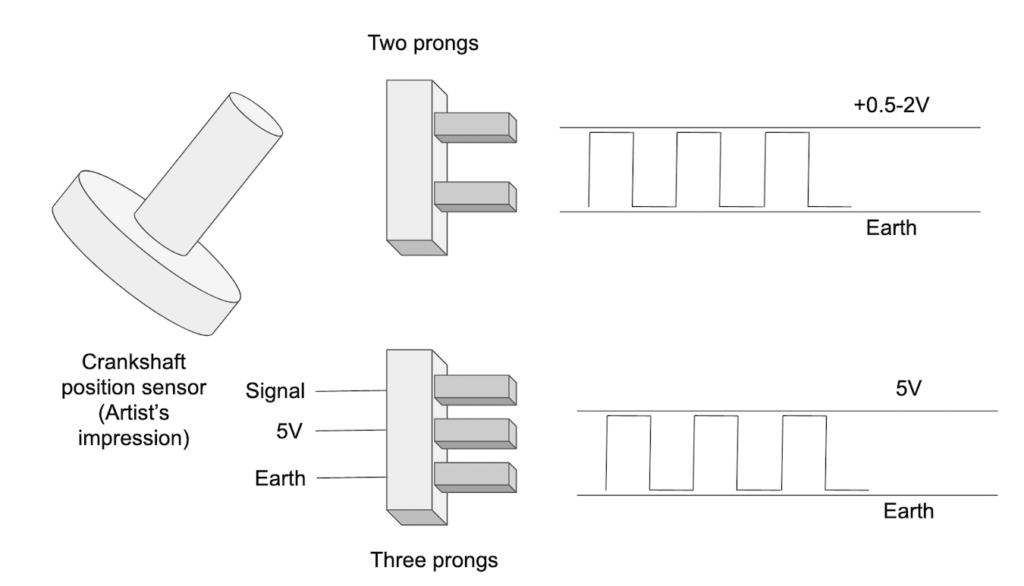
To test two-prong crankshaft position sensors:
- Remove the sensor from the engine. Make sure the engine has cooled first, or I dunno, you’ll burn yourself, and maybe oil will come out!
- Hook it up to a voltage sensor or multimeter. You only need a simple one. This simple Fluke multimeter is battle-hardened and useful.
- Move a ferromagnetic metal object (like a steel bolt or piece of iron) near to and away from the sensor quickly. Use a magnet (a fridge magnet will do) if you want a stronger signal.
Do you get a voltage output? Good. If not, bad sensor. (Or wires.)
Testing three-prong crankshaft position sensors
Testing a crankshaft position sensor with three prongs is the same conceptually, but you have to apply a voltage and ground, and then test between the signal terminal and the earth.
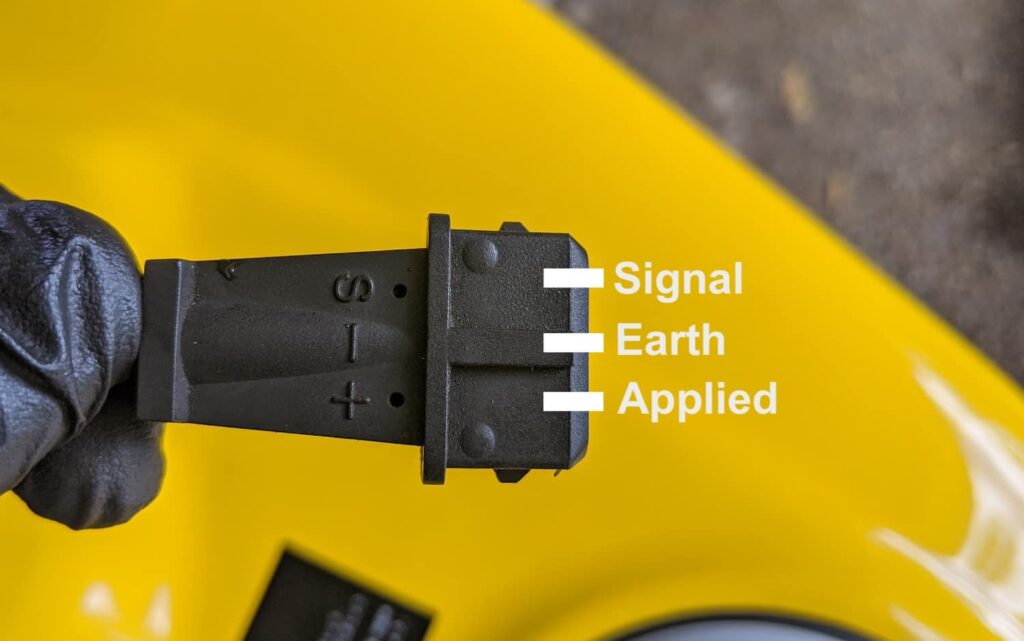
Look at the sensor itself. Are there markings on it indicating which are the positive, negative, and signal terminals?
Even my ancient 1998 sensor (made by Bosch, marketed by Magneti Marelli) had markings on it. So, it’s likely that yours does too.
If not, check out the wiring diagram in your manual.
Fixing or replacing a bad position sensor
Firstly – check the wiring. The wiring or connector for your sensor might be loose. Sometimes jiggling can get it going again; not something you really want to rely on, so you might want to replace it anyway (or replace all the wiring).
Secondly, check the air gap.
The air gap spec varies between motorcycles, but it typically is 0.5-1 mm. On my Ducati 900SS, it’s 0.6 to 0.8mm, but of course it’ll work with less gap… just with risk that there will be contact between the timing wheel and the sensor.
There are different ways of measuring air gap on different engines. The best way is to use a feeler gauge. But it depends on access in your particular engine.
Finally, you might just want to replace the crankshaft position sensor altogether.
The easiest way to get a replacement CPS is to get an OEM unit.
But bear in mind that many position sensors are actually manufactured by third parties (like Bosch), so you might find some alternatives produced for other vehicles that are much cheaper than OEM.
For example, for my Ducati 900SS, the official part 552.4.009.1A costs US$120 if I buy it from a supplier.
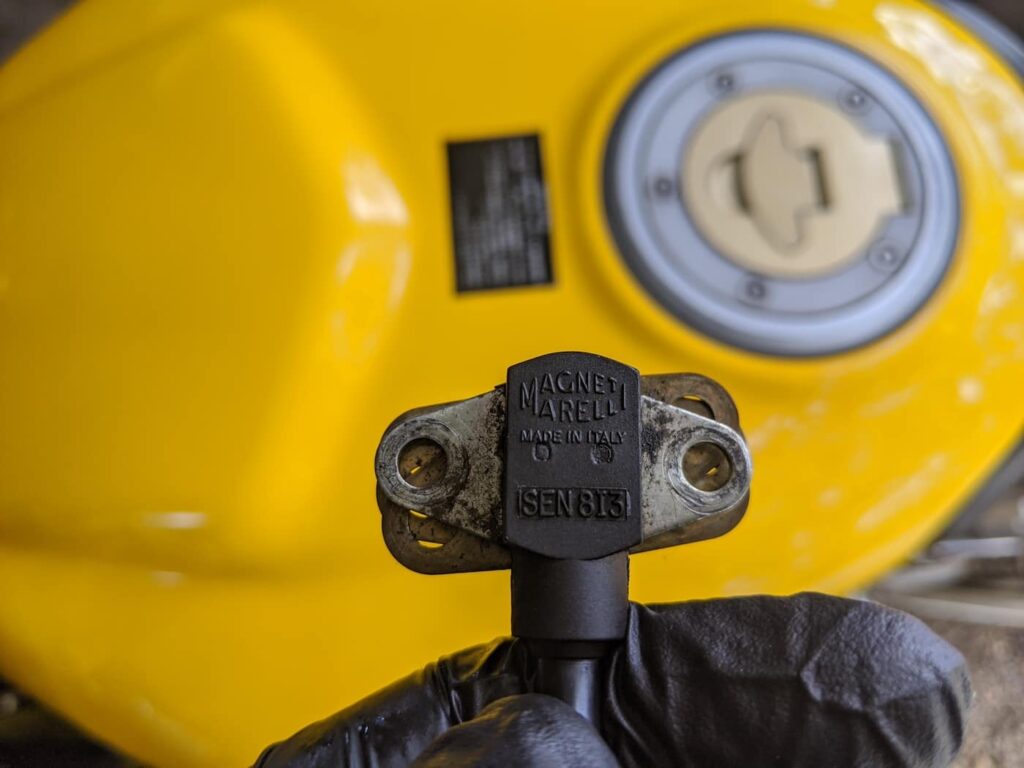
But it’s the exact same part used in some older Fiat or Alfa Romeo cars. So I scoured eBay, and found the same part from a UK supplier. I do have to wait 2-4 weeks for it to arrive, but that’s why I don’t just have one motorcycle!
For older fuel-injected Monsters and Supersports (with two holes, saying “Marelli 8i3” on it), the part number is the same as on an Alfa Romeo 145 or 146, on a Fiat Tip, Tempra, Ducato, or a Lancia Dedra. The part numbers are: Fiat 7679221, 7694335, 60603937; Alfa Romeo/Lancia: 60603937, 60810103, 7733001; FAE 79015; Meat & Doria 87074; Standard 18783.
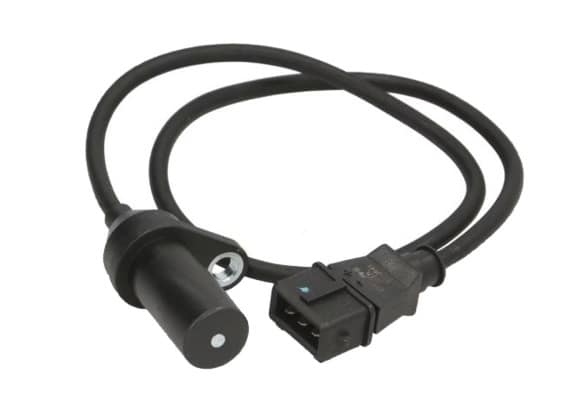
For newer Ducati motorcycles with just one hole on the side (e.g., on my Ducati 1098S), the part numbers are Fiat 46774532, 55187333, 7777960; Standard 18805, SEB414; Alfa Romeo 77872560; Magneti Marelli 4820171010; Lancia 77872560, and a bunch of others.
By finding an alternative crankshaft position sensor that suits, you’ll save a ton of money. You just might have to wait for it to arrive in the mail!

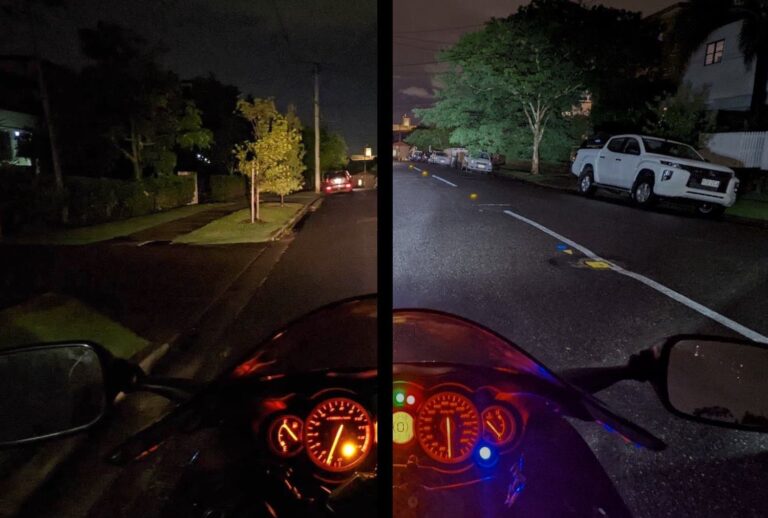

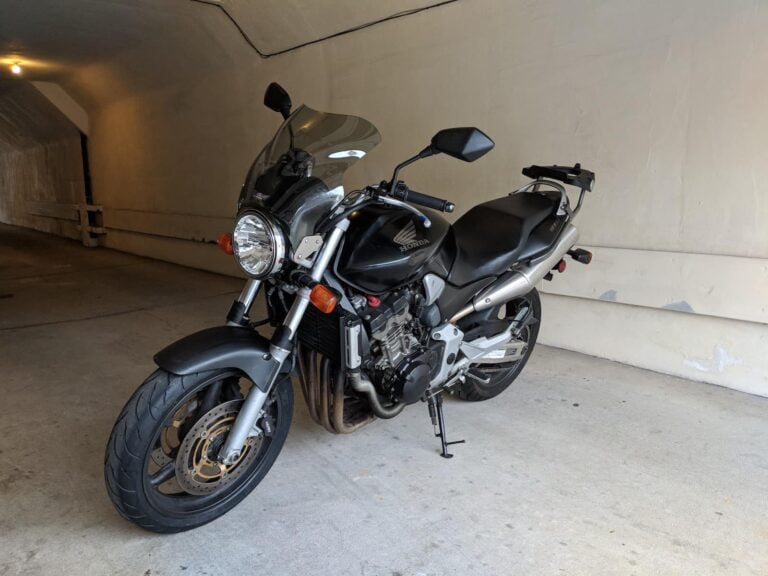
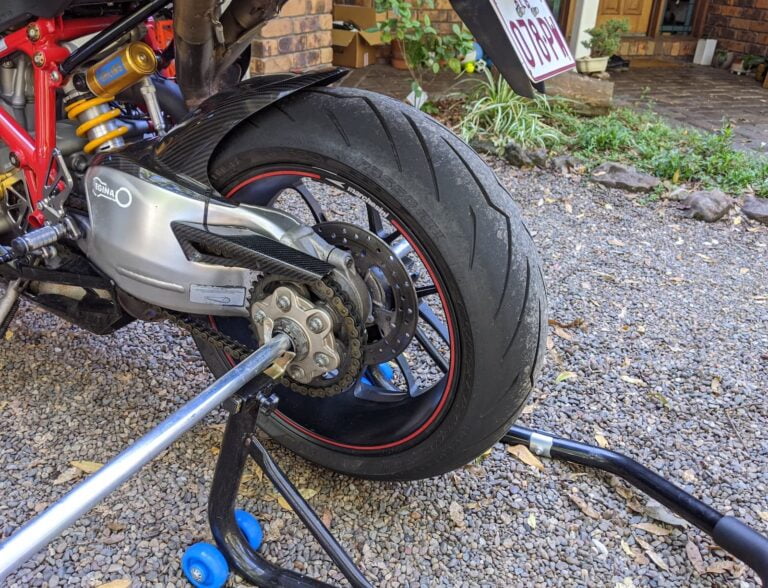
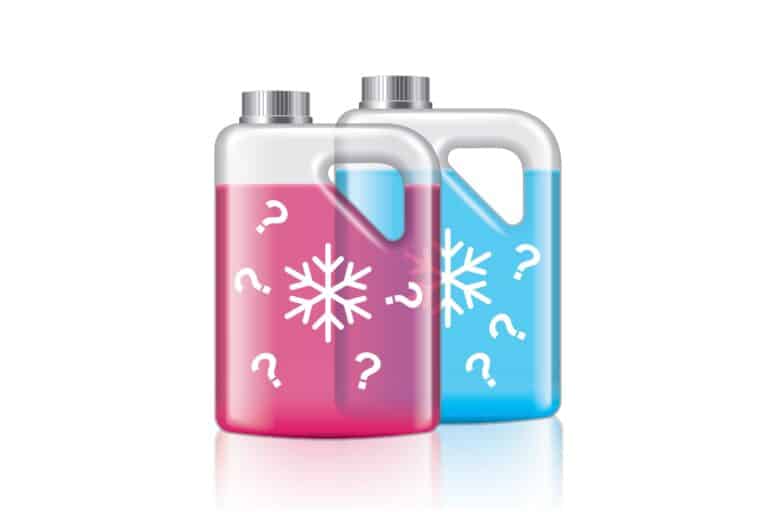
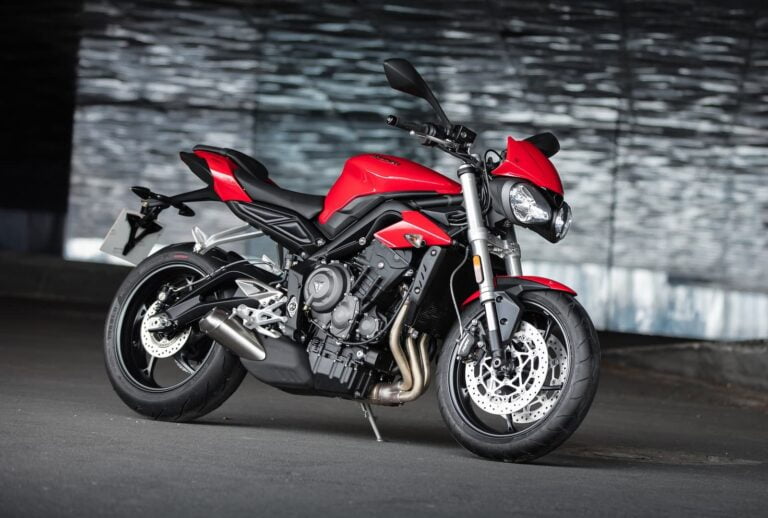
Hi, Well Enjoyed reading your info!, very enlightening, and interesting. Need to get some of that start your engine stuff, whats it called, something bstard sounds,like reall good stuff. Thanks, kind regards.
I’ve a ’98 Ducati 996. After warming up the bike I ride a few k’s and it cuts out. No dash, no fuel priming, no turnover, nothing. Wait 5 mins for it to cool, start it again and ride straight home. Does this sound like the crank sensor?
Sounds like bad fuel pump or clogged injector.
Hi, I am Mohammad Ali from Iran
I read your article on replacing and testing your crankshaft sensor, it was very good
I hope God gives you health and well-being
Do motorcycle Crankshaft sensors (2000 Triumph in particular with Sagem ECU), need to be “relearned” like many automotive applications. After replacing mine I’m unable to start my engine.
It didn’t have to on mine. Do you mean some kind of pairing? I doubt it for a bike of that vintage. By unable to start what do you mean… no turning over at all? A bad CPS on my bike meant it’d turn over but not fire.
What is the resistance in ohms of the crankshaft sensor on the triumph speed triple 955i, it shows 500 ohms to me, is it correct? The engine started fine, and after a few seconds it started to choke, to run out of fuel. And it won’t start again, measured the crankshaft sensor and it shows 500 ohms. I read somewhere that the optimal value is like 200 ohms. Greetings from Serbia
I’m sorry I’m not sure — service manual would be your friend. Per the manual, if the crankshaft sensor is faulty, you’ll get DTC P0335 when you check for fault codes. I’d take that as indication enough to replace it. Otherwise, you can do the voltage tests indicated here.
my sensor has one hole, and two wires, do you maybe know which one would be a replacement (from the car), I can’t find the value of the sensor in ohms in the manual. I read on the forums that it should be about 200 ohms, and mine shows 500. Is it your opinion that it is defective if it shows more respect. Greetings from Serbia😉
Hi. Some of the alternative ones are incorrect. Ie 2 pin Alfa Romeo one so be careful.